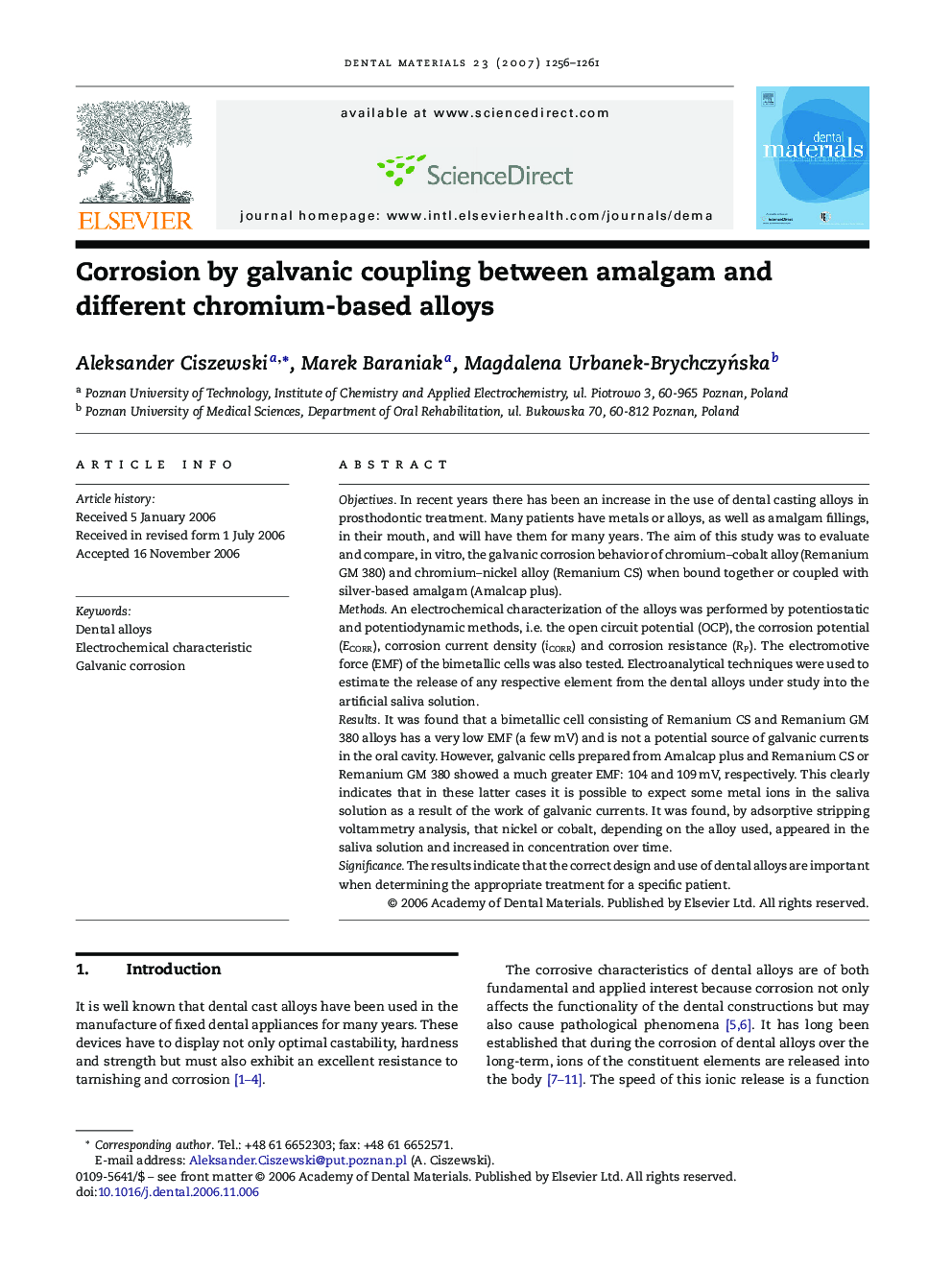| کد مقاله | کد نشریه | سال انتشار | مقاله انگلیسی | نسخه تمام متن |
|---|---|---|---|---|
| 1423293 | 986497 | 2007 | 6 صفحه PDF | دانلود رایگان |

ObjectivesIn recent years there has been an increase in the use of dental casting alloys in prosthodontic treatment. Many patients have metals or alloys, as well as amalgam fillings, in their mouth, and will have them for many years. The aim of this study was to evaluate and compare, in vitro, the galvanic corrosion behavior of chromium–cobalt alloy (Remanium GM 380) and chromium–nickel alloy (Remanium CS) when bound together or coupled with silver-based amalgam (Amalcap plus).MethodsAn electrochemical characterization of the alloys was performed by potentiostatic and potentiodynamic methods, i.e. the open circuit potential (OCP), the corrosion potential (ECORR), corrosion current density (iCORR) and corrosion resistance (RP). The electromotive force (EMF) of the bimetallic cells was also tested. Electroanalytical techniques were used to estimate the release of any respective element from the dental alloys under study into the artificial saliva solution.ResultsIt was found that a bimetallic cell consisting of Remanium CS and Remanium GM 380 alloys has a very low EMF (a few mV) and is not a potential source of galvanic currents in the oral cavity. However, galvanic cells prepared from Amalcap plus and Remanium CS or Remanium GM 380 showed a much greater EMF: 104 and 109 mV, respectively. This clearly indicates that in these latter cases it is possible to expect some metal ions in the saliva solution as a result of the work of galvanic currents. It was found, by adsorptive stripping voltammetry analysis, that nickel or cobalt, depending on the alloy used, appeared in the saliva solution and increased in concentration over time.SignificanceThe results indicate that the correct design and use of dental alloys are important when determining the appropriate treatment for a specific patient.
Journal: Dental Materials - Volume 23, Issue 10, October 2007, Pages 1256–1261